How to Shampoo Your Dog: 5 Pro Tips for a Stress-Free Bath
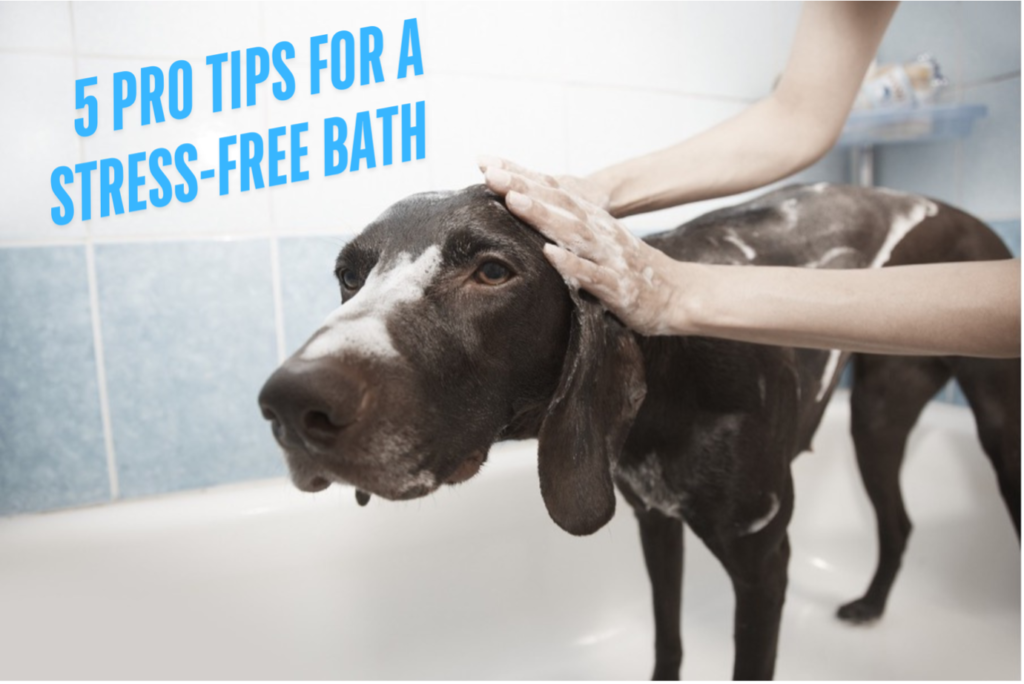
Are you tired of struggling with your dog every time bath day arrives? If just mentioning “bath time” makes your pup run for cover, you’re not alone. Many dog owners find it challenging to keep their doggy clean without making it a stressful experience.
But what if bath time didn’t have to be a battle? Imagine your pup calmly entering the tub, and making bath time less stressful for both of you. With the right techniques, you can make this a more positive experience and can create a bond.
In this guide, we’ll share five expert tips for stress-free dog baths, covering everything from prep to drying. So grab your towels and let’s dive in – your dog will thank you!
Prepare Your Dog for Bath Time

A. Check and Clean the Ears
Before bathing, check your dog’s ears for excess hair. Removing ear hair can prevent moisture buildup and reduce the risk of infections. Use pet-safe ear pluckers and be gentle to avoid discomfort.
B. Trim nails to prevent bleeding
| Nail Trimming Tips |
| Use dog-specific clippers |
| Trim small amounts at a time |
| Have styptic powder ready |
Trim your dog’s nails before bathing to prevent accidental scratches and bleeding. Be careful not to cut the quick, which is the pink part of the nail. If you do accidentally cut the quick and bleeding occurs, apply styptic powder immediately.
C. Remove mats from coat
- Brush thoroughly before bathing
- Use a detangling spray for stubborn mats
- Consider professional grooming for severe matting
Removing mats is crucial for a comfortable bath experience. Wet mats can tighten and cause skin irritation, especially around sensitive areas like the ears and belly. Take the time to gently work out any tangles before you start the bath.
Now that your dog is prepped, we’ll move on to setting up a safe bathing environment.
Set Up a Safe Bathing Environment

Let’s set up a safe and comfortable bathing environment, ensuring we have everything we need within reach. This step is crucial for a stress-free experience for both you and your dog.
A. Secure bath area
When choosing a bathing location, consider easy water access. Also, create a non-slip surface using mats or tiles to prevent accidents. Use a shower stall for large dogs and a raised tub for smaller breeds.
B. Gather necessary tools and products
| Essential Items |
| Dog shampoo |
| Towels |
| Brush and clipper |
| Non-slip mat |
Collect all the required items before starting the bath. This includes dog-specific shampoo, towels, a brush or comb, and any other grooming tools you might need. Having everything within reach will make the process smoother and less stressful for your pet.
With our bathing area set up and supplies ready, we’re now prepared to master the proper bathing technique in the next section.
Master the Proper Bathing Technique
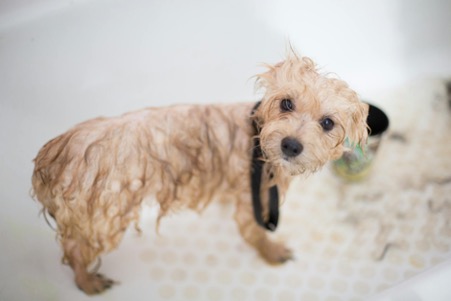
Now that we’ve set up a safe bathing environment, let’s learn the proper technique for shampooing your dog. Here’s how to do it effectively:
A. Wet the coat thoroughly
Start by wetting your dog’s coat completely, making sure the water penetrates to the skin. This ensures a deeper clean and allows the shampoo to lather properly.
B. Wash the body first, face last
Begin washing your dog from the neck down, leaving the face for the very end. This helps minimize shaking and keeps your dog more relaxed during the bath.
C. Apply appropriate amount of shampoo
| Coat Type | Shampoo Amount |
| Short | 1-2 teaspoons |
| Medium | 1-2 teaspoons |
| Long | 3-4 tablespoons |
D. Use bath mitts for effective distribution
Try using bath mitts to evenly distribute the shampoo and gently massage it into your dog’s coat. This ensures a more thorough clean and can be a relaxing experience for your pet.
Now that you’ve mastered these techniques, let’s move on to the crucial step of rinsing for a squeaky-clean coat.
Rinse Thoroughly for a Clean Coat
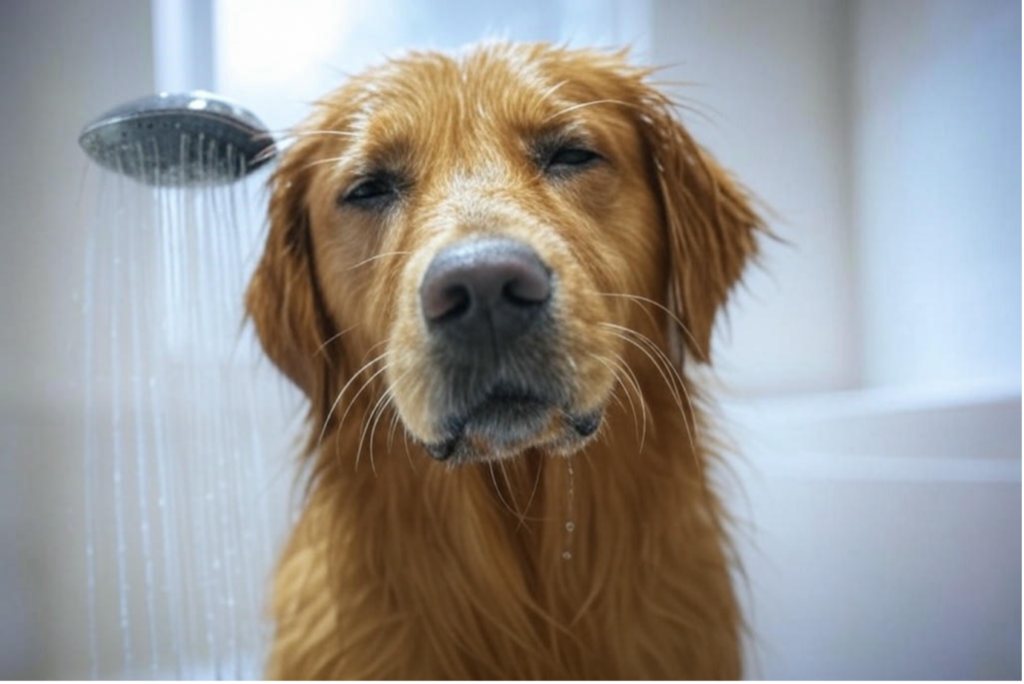
After you’ve lathered your dog with shampoo, it’s time to rinse it off! Rinsing seems simple, but skipping it can leave shampoo behind, causing itchy skin or dull fur. A good rinse makes your dog’s fur clean and irritant-free, plus it smells great! Here’s how to do it right.
A. Use lukewarm water
Lukewarm water is best – too hot or cold water can hurt your dog’s skin. Test the water on your wrist.
B. Rinse from head to tail
Rinse from the head (or neck, if you skipped the face) down to the tail. Rinse thick fur areas like the chest and belly well.
C. Check hidden spots
Make sure to rinse all the shampoo from under the legs, behind the ears, and around the tail. You can lift the fur with your hands or a showerhead to help rinse these areas. Keep rinsing until there are no more bubbles and the water runs clear.
Perfect the Drying Process
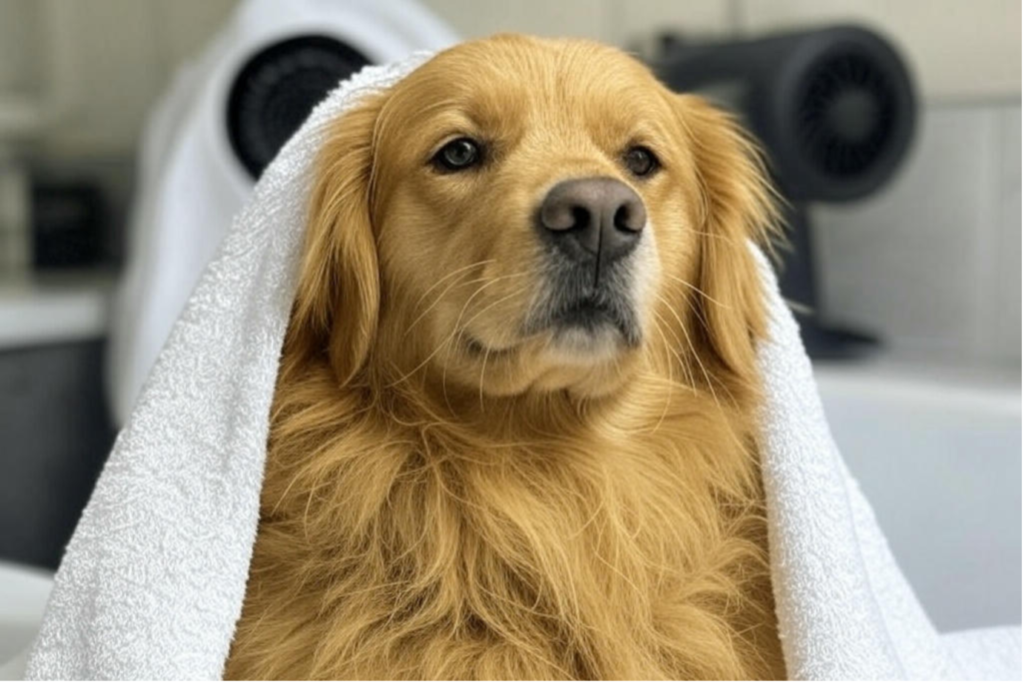
Once the bath is done, drying your dog is just as important as other steps. A proper drying technique prevents damp fur from matting or harboring bacteria, and it saves your furniture from an impromptu soak. Whether your pup loves the towel cuddle or dreads the dryer hum, these tips will help you wrap up bath time like a grooming guru.
A. Start with a towel blot, not a rub
Use a thick towel and gently blot your dog’s fur. Rubbing can tangle fur or irritate wet skin. Focus on the back, legs, and belly. Microfiber towels work great!
B. Use a pet-safe blow dryer on low heat
If your dog allows it, use a pet dryer on low heat. Human dryers are too hot. Keep the dryer moving 6-12 inches from the fur to prevent burns. Start at the back and move forward, letting your dog get used to the noise.
C. Brush while drying
Brush your dog’s fur while drying to stop mats and make it smooth. Use a slicker brush for long-haired dogs and a comb for short-haired dogs. This is like a mini massage!
Conclusion
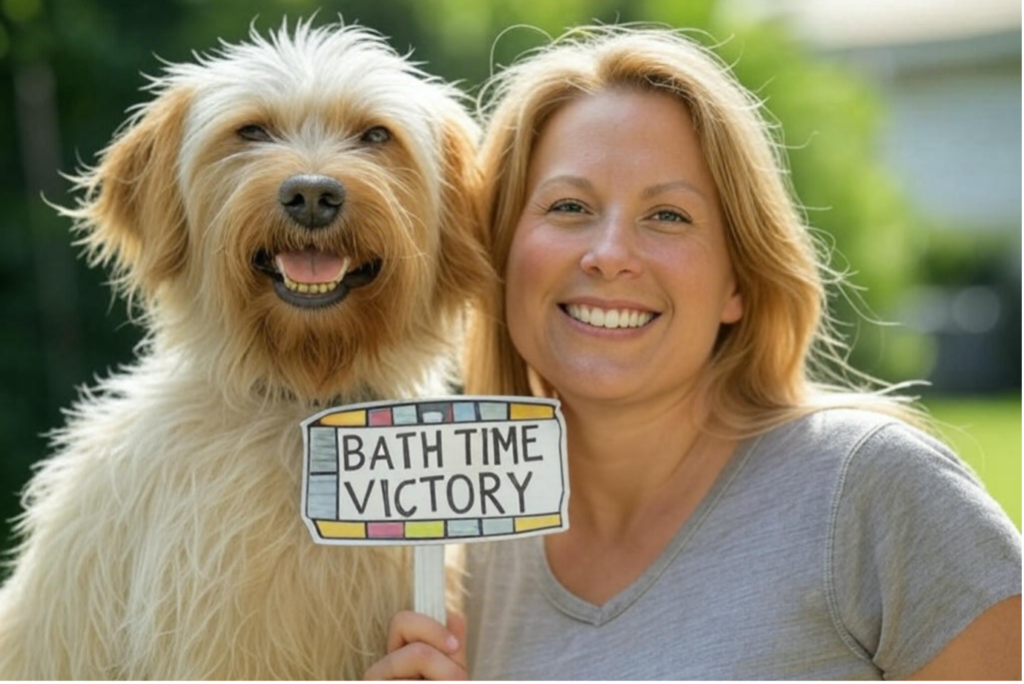
There you have it— You’ve got five tips to make dog bath time easy! By prepping your dog, setting up a safe space, washing and rinsing well, and drying them right, you’re not just cleaning your dog – you’re building trust and having fun. No more chasing a wet dog around the house or cleaning up a flooded bathroom. Now, you’ll have a happy, clean dog and be a grooming pro.
So, next bath day, don’t worry – enjoy it! With these tips, you’ll wonder why you were ever stressed. Share your bath-time stories with us– we’d love to hear how these tips worked for you and your dog!

